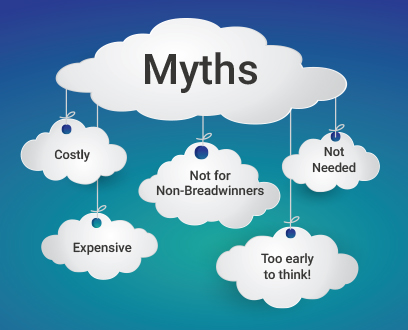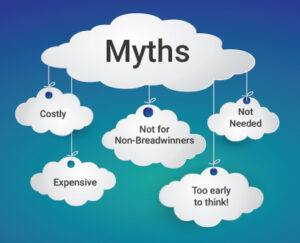Top 5 Myths About Home and Auto Insurance You Should Stop Believing
When it comes to home and auto insurance, many people are misinformed or believe myths that can lead to poor decision-making. These misconceptions can result in individuals paying more than necessary for coverage or, worse, being underinsured when the unexpected happens. Whether you’re shopping for a home insurance quote, a car insurance quote, or considering bundling your home and auto insurance, it’s important to separate fact from fiction.
In this article, we will debunk the top 5 myths about home and auto insurance and provide you with the facts so you can make smarter, more informed choices about your coverage.
Myth #1: Homeowners Insurance Covers Everything
One of the most common myths surrounding homeowners insurance is that it covers all types of damage, loss, or injury. While it’s true that homeowners insurance provides substantial coverage for many risks, there are exclusions that you should be aware of. A house insurance quote may not include everything you expect it to, especially when it comes to certain natural disasters and other risks.
What Homeowners Insurance Actually Covers
A standard homeowners insurance policy typically covers the following:
- Dwelling Protection: Damage to the structure of your home caused by fire, vandalism, or other covered perils.
- Personal Property Protection: Coverage for personal items like furniture, electronics, and clothing.
- Liability Protection: Coverage in case someone is injured on your property and decides to sue.
- Additional Living Expenses (ALE): Costs for temporary living arrangements if your home becomes uninhabitable due to a covered event.
What Homeowners Insurance Does Not Cover
- Floods: Most standard homeowners insurance policies do not cover flood damage. If you live in a flood-prone area, you’ll need to purchase additional flood insurance.
- Earthquakes: Similarly, earthquake damage is typically excluded unless you purchase specific earthquake insurance.
- Maintenance Issues: Damage resulting from lack of maintenance, such as mold, pest infestations, or wear and tear, is generally not covered.
It’s crucial to carefully read your policy and ask your insurer about exclusions. Understanding these details will help you ensure you have the right level of protection.
Myth #2: The Cheapest Car Insurance is Always the Best Deal
While many people are attracted to cheap insurance rates, choosing the lowest-priced car insurance policy may not always be the best decision. It’s important to understand that the cheapest car insurance policy may leave you underinsured, which could be problematic if you need to file a claim.
Why You Shouldn’t Only Look at Price
- Coverage Gaps: If you opt for the cheapest auto insurance, you might be sacrificing essential coverage options. For example, the most affordable car insurance policies might exclude coverage like collision or comprehensive coverage, leaving you responsible for the repair costs after an accident or theft.
- High Deductibles: To lower the premium, some insurance companies may increase the deductible. While this lowers your monthly costs, it means you’ll pay more out-of-pocket in case of a claim.
- Limited Support and Customer Service: Lower-priced policies might come with less-than-ideal customer service or claims handling. If you have a bad experience when you need help most, the savings on your premium may not be worth it.
Instead of simply looking for cheap insurance, consider your coverage needs and how much financial protection you’ll require in the event of an accident. For example, ask yourself if you need temporary car insurance for a short-term situation, or whether you need to go with a more comprehensive policy for long-term coverage.
The Best Approach
To find the best car insurance, focus on policies that offer a balance of affordability and adequate coverage. Get car insurance quotes from multiple providers and compare the level of coverage, customer service ratings, and deductibles. You might find that slightly higher premiums are worth the peace of mind and better service.
Myth #3: Your Home Insurance Covers All of Your Belongings
Many people assume that homeowners insurance will fully cover the value of all their personal belongings in the event of a disaster, but that’s not always the case. Personal property coverage is typically included in most home and auto insurance policies, but there are limits to how much coverage you get for individual items.
Personal Property Limits
A standard homeowners policy will provide coverage for your personal belongings, but the limits may not be sufficient to fully replace high-value items like:
- Jewelry
- Art collections
- Electronics
- Expensive furniture
In some cases, your insurance may cover personal property up to a certain dollar amount, but you may need to purchase a rider or additional coverage for high-value items. This is especially important if you own valuable items that exceed the policy’s default limits.
How to Protect Your Personal Property
When reviewing a house insurance quote, make sure to ask about personal property limits and whether they are adequate to cover the full replacement value of your belongings. If necessary, purchase additional coverage or endorsements (also known as riders) to ensure that valuable items are fully protected.
Example:
If you own a collection of rare jewelry worth $10,000, but your homeowners insurance policy only covers $2,000 worth of personal property, you will be left to cover the remaining $8,000 in the event of a loss. Adding a rider for jewelry can protect that full value.
Myth #4: Bundling Home and Auto Insurance Always Saves You Money
Many people believe that bundling their home and auto insurance with one company automatically guarantees significant savings. While bundling policies can often lead to discounts, it’s not always the best deal, and it doesn’t guarantee the lowest premiums.
What You Should Consider Before Bundling
- Not All Discounts Are Equal: Some auto and home insurance companies offer substantial discounts for bundling, while others might only provide a small reduction in premiums. It’s important to calculate whether bundling truly saves you money compared to purchasing separate policies.
- Policy Comparison: Sometimes, bundling with one insurer might actually cost more than getting individual policies from different companies. In some cases, a specialized auto insurance company might offer better rates for car insurance, while another might provide more competitive rates for homeowners coverage.
- Coverage Quality: When bundling, make sure you’re not sacrificing quality of coverage for the sake of a discount. Compare the level of coverage and make sure you’re not missing out on essential protections just to save a little money upfront.
How to Make the Right Decision
Before committing to bundling, get separate home insurance quotes and car insurance quotes from different providers. If the bundled price is better than purchasing individual policies, then it’s a good deal. But if it’s not significantly cheaper, it might be worth considering separate policies that offer better coverage at competitive prices.
Myth #5: Your Car Insurance Rates Will Never Change
Many drivers assume that their auto insurance rates will remain the same for the duration of their policy, but the reality is that rates can—and often do—change. Several factors can influence your premium rates throughout the year, and it’s important to stay aware of these changes to avoid surprises when it’s time to renew.
Factors That Affect Car Insurance Rates
- Driving Record: Your driving history plays a major role in your auto insurance premium. If you get into an accident or receive traffic violations, your rates could go up.
- Age and Gender: Younger drivers or male drivers may pay higher rates due to higher accident statistics for these groups.
- Location: Where you live affects your premium rates. Drivers in urban areas often pay more for auto insurance due to the higher risk of accidents and theft.
- Vehicle Type: The type of car you drive will also affect your rates. Expensive or high-performance cars tend to have higher premiums because they’re more expensive to repair or replace.
Why Your Premium Might Go Up
Even if you haven’t had an accident, your premiums might increase due to changes in market conditions or insurer adjustments. That’s why it’s essential to review your car insurance quote when it’s time to renew. If you feel your rates have increased unfairly, shop around and get new quotes from other car insurance companies to see if you can find a better deal.
Conclusion
Understanding the facts behind home and auto insurance is essential to getting the right coverage for your needs. Avoid falling for these common myths that can leave you underinsured, paying more than necessary, or simply confused about your policy. Instead, take the time to get car insurance quotes, compare home insurance quotes, and choose the coverage options that provide the best protection for your home, car, and family. By staying informed, you’ll be able to make smart, cost-effective decisions about your home and auto insurance.
For more information visit the following sites:





